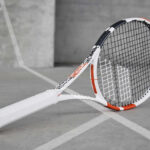Many people prefer to cook what they enjoy eating the most. If you enjoy meat or are practising serving those who enjoy the chewy bites, you should definitely consider getting a meat butcher knife. A butcher knife also makes a unique gift for home chefs.
Slicing meat with the wrong knife will devour your entire day while leaving you with nothing but irritating scraps of raw meat when you want different, sleek, and ideal cuts to execute your party plan. A butcher knife delivers superior cutting precision and ensures seamless cuts of meat.
What Is the Difference Between a Chef’s Knife and a Butcher Knife?
A chef’s knife is 15cm to 20cm long with a sharp tip and curved edge. It’s a multi-purpose knife that can be used for slicing, dicing, chopping, and mincing. A butcher’s knife is longer and heavier and is designed to cut through bones, big chunks of meat, and even entire animal carcasses. Contrary to what many think, you don’t need a lot of precision to use it.
Different Types of Butcher Knives
Like with most things, you’ll find plenty of meat butcher knife models available that differ from one another. Let’s take a look at the different types and their uses.
Traditional Butcher Knife
A versatile knife that can be used for all types of meat-cutting tasks. Its broad blade with a curved tip can be used to slice, trim, and skin animals.
Boning Knife
This knife aids in the seamless cutting of meat around the bone. It is classified into four types: straight, curved, flexible, and stiff. Its versatility makes it one of the most preferred butcher knives. It aids in the trimming, skinning, and slicing of meat into little pieces.
The flexible boning knife can curve and bend around the bones, whereas the straight boning knife is more traditional. Furthermore, the boning knife can be used as a skinner on sheep and goats, a trimmer to remove the hide, a slicer for loins, and a breaking knife for leg joints.
Steak Knife
It is used to carve steaks and other meats. This style of knife is seen in most homes since it can easily cut through meat fibres and bones. There are three types of steak knives to pick from: hollow, straight, and serrated.
Skinning Knife
This knife is mainly intended for skinning animals. The skinning knife for lambs has a sharp blade with a not-too-curved or blunt tip. It is also useful for gutting and skinning small animals. The blunt tip prevents punctures, and the slightly curved blade is great for cutting through the midsection of animals and releasing internal organs.
Carving Knife
Carving knives are typically long and narrow butcher knives with a scalloped edge and rounded tip. Because of the short width, the blade can cut crisp, thin, evenly proportioned slices with little dragging motion. Cakes can also be neatly sliced with carving tools.
How to Choose a Good Butcher’s Knife
Here is what you need to consider to choose a butcher knife that is right for you.
Blade
When it comes to butchering meat, a razor-sharp blade is essential. Look for a high carbon stainless steel blade that will not only endure a long time but will also be efficient. The stainless steel also allows the knife to cut through tough meat without being damaged. It greatly reduces the butcher’s work. Keep in mind that a dull knife is not only ineffective but also dangerous to use. Purchasing a knife sharpener will also be beneficial in the long run.
Handle
Butcher’s knives come in a variety of handle styles. Knives with wooden, plastic, or steel handles are all available options. Because butchering can be extremely slippery, always use a textured handle with a strong grip. Wooden handles are also a possibility, but they might get rough with time. After washing such knives, mineral oil should be applied to help preserve them.
Size
There are many different sizes of butcher knives available. They range in length from 15 to 40 centimetres. If you frequently cook smaller bits of meat, such as chicken or chops, you can use a smaller knife. They are useful for getting around the meat’s bone. Another advantage of smaller knives is that they are portable, handy, and lightweight. This allows them to be readily carried out while camping, travelling, or hunting. Smaller knives, ranging from 20 to 25 centimetres, are commonly used by homemakers and chefs.
Larger portions of meat, such as venison or beef, frequently require the use of a long knife. Extended knives are used for long swipes and deeper cuts in the meat. These large knives, which are mostly used for skinning, are popular among professional butchers.
Balance
The grip provided by the knife is quite important. So, always hold the knife before purchasing it. There are various types of knives. Some knives have a blade that runs through the handle as well. Many people love these knives because they feel heavier when used. When compared to lightweight knives, they have a good balance. A knife with a good balance gives you more control and is considered efficient for all meat prep chores.






